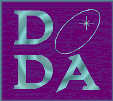You are here
2010 Brouwer Award Winner - Andrea Milani
 Andrea Milani began his scientific research in pure mathematics, but soon became interested in celestial mechanics, planetary dynamics, geophysics, and other branches of applied mathematics. While his initial foray into these fields led to the development of a synthetic theory of planetary motion, Andrea is perhaps best known for his research in asteroid dynamics, where he has authored and coauthored several key developments in the field. His analytical and synthetic theories of asteroid motion have allowed him to determine the positions of non-linear secular resonances across the solar system as well as compute asteroid proper elements for main belt, Trojan, and near-Earth asteroids. Working closely with his collaborators, Andreas work has led to proper element calculations that have been used to identify asteroid families, study their origin and evolution, and assess the long term dynamics of asteroids. He has also pioneered studies of chaos in the motion of asteroids and how they could be used to determine the ages of asteroid families.
Andrea Milani began his scientific research in pure mathematics, but soon became interested in celestial mechanics, planetary dynamics, geophysics, and other branches of applied mathematics. While his initial foray into these fields led to the development of a synthetic theory of planetary motion, Andrea is perhaps best known for his research in asteroid dynamics, where he has authored and coauthored several key developments in the field. His analytical and synthetic theories of asteroid motion have allowed him to determine the positions of non-linear secular resonances across the solar system as well as compute asteroid proper elements for main belt, Trojan, and near-Earth asteroids. Working closely with his collaborators, Andreas work has led to proper element calculations that have been used to identify asteroid families, study their origin and evolution, and assess the long term dynamics of asteroids. He has also pioneered studies of chaos in the motion of asteroids and how they could be used to determine the ages of asteroid families.
In more recent years, Andrea has helped develop new methods of preliminary orbit determination for small solar system bodies, some which are near-Earth asteroids that may be on collision trajectories with the Earth. His analytical and computational methods of identifying fast-moving solar system objects from multiple observations and then linking those data together are designed to take full advantage of the huge number of observations expected from next generation surveys searching for hazardous asteroids and comets. Andrea maintains permanent web services dedicated to providing general information on all known asteroids (NeoDyS, AstDyS), and at these sites he has made publicly available many of the celestial mechanics tools he has developed with his collaborators over the years (e.g., ORBFIT).
He has served as president of the IAU Commission 7 (Celestial Mechanics and Dynamical Astronomy), he has served on the editorial boards of several journals, and he has written or edited a number of books and textbooks on planetary science topics. Finally, in his capacity as a full professor of the Department of Mathematics at the University of Pisa, he has supervised several talented young students, some which now make up part of his extraordinarily creative and prolific team of scientists.
